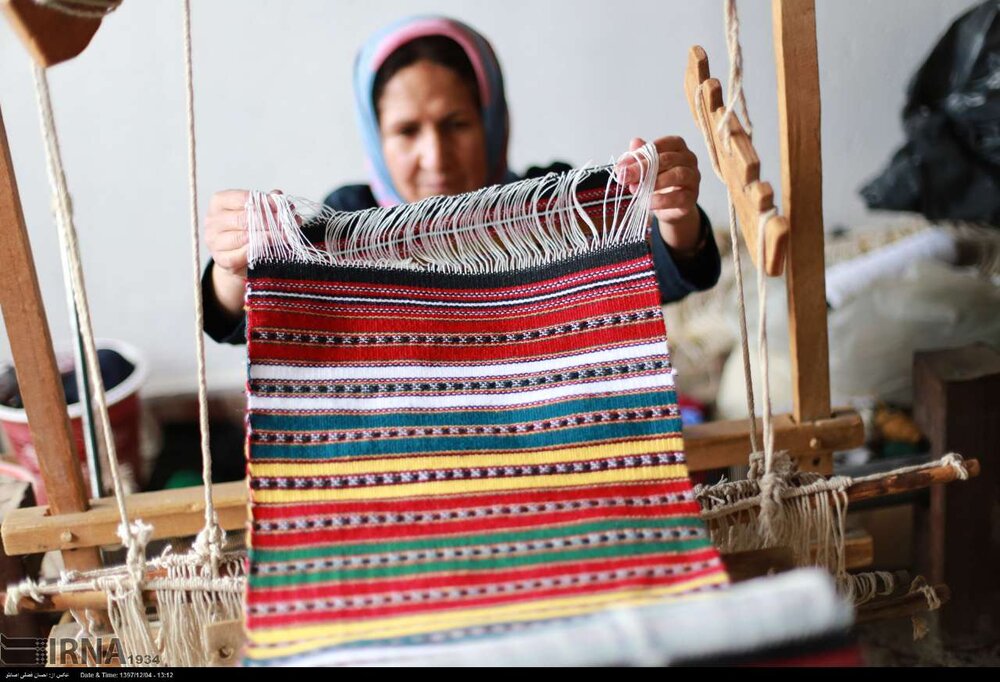From one generation to the next: Jajim of Alasht

TEHRAN - Weaving Jajims, which is an indigenous type of rug woven from cotton or wool, has long been a significant craft in the Alasht village of Savadkuh, Mazandaran province.
Narratives say this craft has passed on from one generation to the next and has turned into a tradition that is learned by daughters from their mothers.
Jajim is used as a floor covering and in terms of thickness it is a midpoint of thick fabrics and Kelims or “Palas” (a kind of coarse fabric). Beginning a long time ago, artist women of Alasht occupy themselves with weaving Jajims, and by doing so, they not only provide a share of the income of the family but also create a kind of social structure by connecting the producers of the raw materials with the weavers of this product.
The ancient craft received national recognition from the Cultural Heritage, Handicrafts, and Tourism Organization as the principal handicraft of Alasht village in 2018, according to Visit Iran.
In addition to its ancient history and high quality, the supply of all the raw materials from local resources was the reason that led to this recognition. These Jajims are weaved using yarns that have been produced from the sheep bred locally and are dyed using herbal pigments from plants that grow frequently in the northern region of Iran.
The patterns and motifs of this colorful hand weave of Alasht, which have gained an international reputation due to their exportation, are completely imaginative. Geometric and stripe patterns in different colors such as green, orange, yellow, brown, white, and blue are mostly found among them. The wrap and weft threads can be from wool, even though cotton wraps and wool weft are combined occasionally.
Experts believe that Persian carpets are among the most complex and labor-intensive handicrafts in the world. Weavers spend several months in front of a loom, stringing and knotting thousands of threads. Some practice established patterns, some make their own. When the weaving is finally done, the carpet is cut, washed, and put out in the sun to dry.
There is a long history behind the Persian carpets. For millennia, invaders, politicians, and even enemies have left their impact on Iran’s carpets. As mentioned by Britannica Encyclopedia, little is known about Persian carpet making before the 15th century, when art was already approaching a peak.
The Mongol invasion of the 13th century depressed Persia’s artistic life, only partially restored by the renaissance under the Mongol Il-Khan dynasty (1256–1353). Although the conquests of Timur (who died in 1405) were in most respects disastrous to Persia, he favored artisans and spared them to work on his great palaces in Samarkand.
Later in the 17th century, there was a growing demand for the production of so many gold-and-silver-threaded carpets that were ultimately exported to Europe. Some were made in Kashan, but many of the finest came from Isfahan. With their high-keyed fresh colors and opulence, they have affinities with European Renaissance and Baroque idioms.
From the early 8th century onwards, nomads and town dwellers were still making carpets using dyes developed over centuries, each group maintaining an authentic tradition. Not made for an impatient Western market, these humbler rugs of the “low school” are frequently beautifully designed and are of good material and technique.
AM
